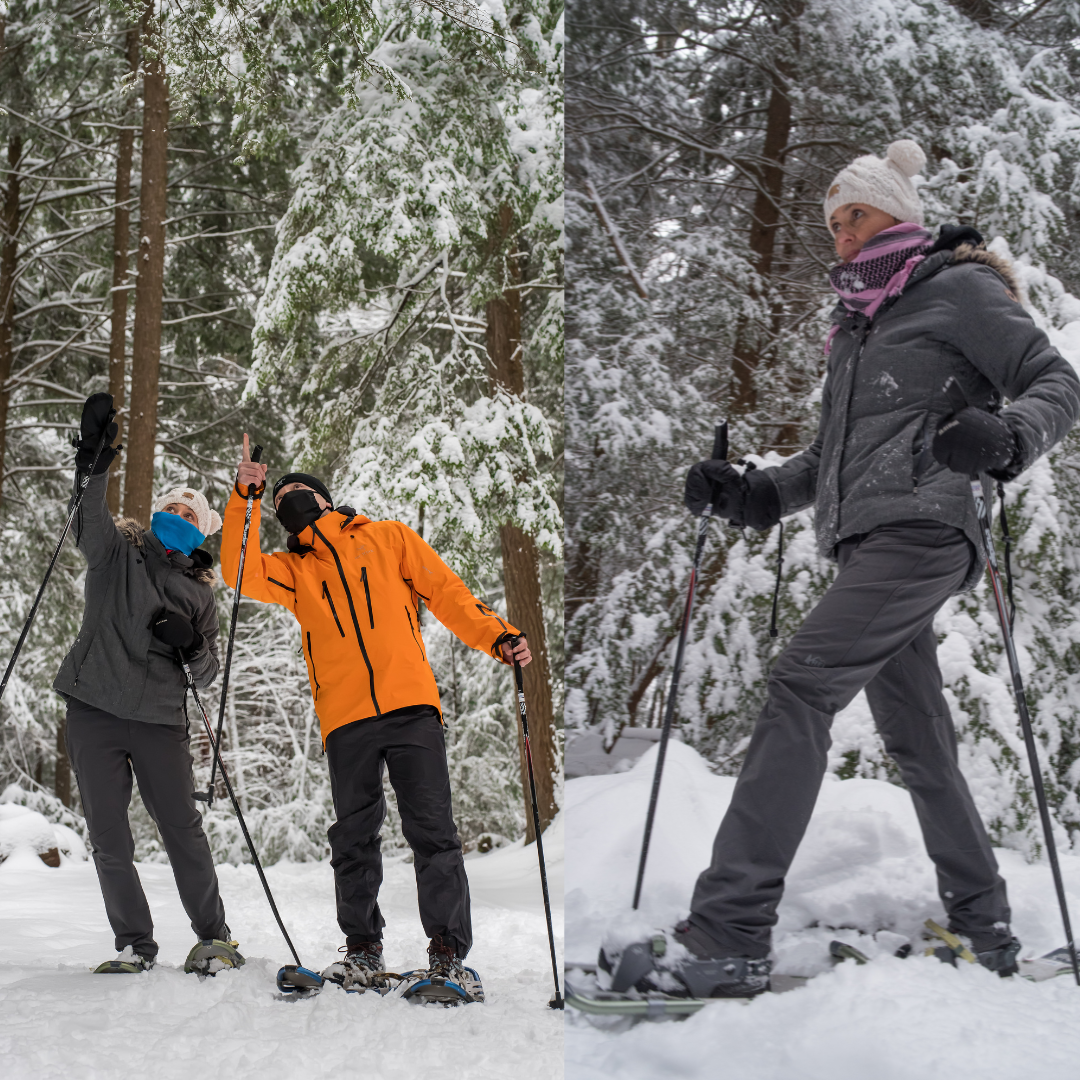Snowshoeing
About
It’s time for the fresh, chilly air and peaceful scenery offered by winter sports. If you’re looking for a way to improve balance and spatial awareness, and to get exercise at a level that you can set for yourself, consider adaptive snowshoeing this season.
Snowshoeing is the “quiet” snow sport. It allows you to experience the stillness of the backcountry.
Who Can Snowshoe
Walking through the snow can be relatively easy or quite difficult, depending on the slope of the terrain and the type of snow on the ground. Because the sport does require walking, adaptive snowshoeing is best suited for people with disabilities who are ambulatory, such as people with traumatic brain injuries, amputations or hemiplegia.
Basically, if you can walk, you can snowshoe, it’s a good idea to use Alpine ski poles at all times to help with balance and posture.
However, various adaptations have been created so that people who are not able to walk are able to snowshoe using a sled.
There are many things to learn and enjoy in snowshoeing programs around the country.
In the Sun Valley Adaptive Sports program, participants learn the different types of snowshoes, types of snow and slope conditions, avalanche awareness, walking techniques, and the facts on hypothermia, nutrition, hydration, and balance.
Whether you want to take it easy on flat ground and firm snow or go for a bigger workout on a steep slope with fresh powdered snow, consider the tranquil sport of snowshoeing this winter.
Equipment
Check out a list of snowshoeing equipment suppliers here.
Learn More
As you are climbing hills, make sure you always make sure your poles are in front of you and that you place your feet firmly on the snow with each step using your toes.
Once you start going down hills, make sure to keep your poles in front of you, your knees bent and relaxed, and your body weight back on the heels of your feet. Make sure you are stepping heel to toe.
Walking down steep – even medium – pitch slopes in soft, deep snow can be tricky. You may punch into a soft ‘hole,’ a shoe may turn and burrow to one side, or the toe of the shoe can dig in. Any of these mishaps can cause a fall or muscle strain.
Walking downhill in heavy, wet snow is also tricky. The shoes can stick as the heavy snow piles on top. That could make walking difficult, to the point of stumbling.
The secret to walking downhill in either deep, powdery snow or heavy, wet snow is to walk slowly and deliberately. Take medium-length steps, keeping your back fairly erect, and planting your poles out to the front and slightly to the side for balance.
The most important thing is to keep your pace under control.
Traversing
Traversing is also known as side-hilling and is used when exploring steep or uneven terrain. When using this technique, you are turned sideways so that you are facing across the hill instead of up it. As you climb the hill, push into the slope to create a shelf with the side of each snowshoe that is on the uphill side of the mountain. Also, make sure to use your poles for better balance and grip. Your downhill pole must be extended further than your uphill pole so that they are even.
Safety
Always snowshoe with a partner. Anytime a person is out in the snow, there are dangers. Falling upside down in a few feet of powder can be fatal. While snowshoes are fun, they can be awkward and could get tangled up if you fall head over heels. Even getting up after falling on your side can be a little challenging until you get the hang of it.
Find a program near you
Ready to learn more about snowshoeing and try if for yourself? Click here to find a program near you!




